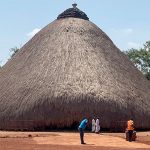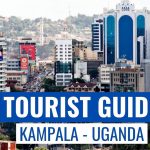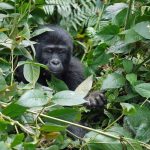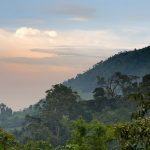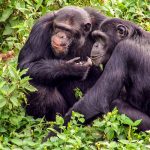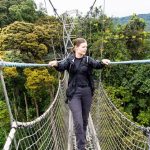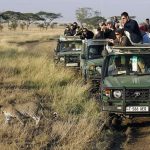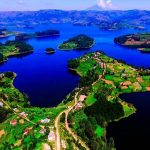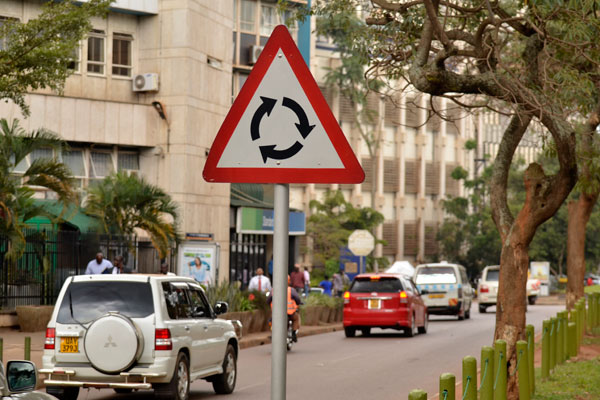Uganda is blessed to be the best birding destination in Africa with the Bwindi Impenetrable forest being the top ranked birding destination in Africa.
Uganda is among the finest birder’s paradise on the entire African continent. The country has more than half of the total bird species in the whole of Africa so this has made it the wealthiest birding destination in Africa. Just on the outskirts of Kampala the capital of Uganda, you can see close to 250 bird species in a single day. This is all credited to the wide variety of habitats available ranging from the spectacular shores of the large Lake Victoria to the verdant forests found in the Albertine Rift as well as the banks of the great River Nile. Despite the fact that Uganda has a single Endemic bird – the Fox’s Weaver, there are twenty three Albertine Endemics here and these are very challenging or even hardly seen in any other places.
Among these endemic species are the Shelley’s Crimsonwing, Handsome Francolin, Dusky Crimsonwing, Rwenzori Turaco, Strange Weaver, Rwenzori Nightjar, Regal Sunbird, Dawrf Honeyguide, Blue headed Sunbird, African Green Broadbill, Red – faced Woodland Warbler, Purple breasted Sunbird, Red throated Alethe, Strip breasted Tit, Archer’s Robin Chat, Yellow eyed Black Flycatcher, Rwenzori Batis, Mountain Masked Apalis, Kivu Ground Thrush, Collared Apalis, Grauer’s Rush Warbler, Short tailed Warbler and Grauer’s Warbler.
The top 10 most sought after Bird species in Uganda include:
- The Shoebill Stork
- Purvell’s Illadopsis
- African Green Broadbill
- Red-fronted Antpecker
- Green-breasted Pitta
- Ruwenzori Turaco
- Nahan’s Francolin
- Black Bee-eater
- Brown-chested Plover and
- Karamoja Apalis
Commonest birding habitats found in Uganda
Uganda the ‘Pearl of Africa’ being an equatorial country prides in rich fauna cover which has provided home to both the local and migrant bird species among which are:
Forests
Uganda has over 700 demarcated forest reserves and a prominent area is the Abertine Rift region which supports over 35 species endemic to Uganda, DRC, Rwanda and Burundi. Other prominent forested areas are the Bwindi forest and the Mgahinga forest.
Wetlands
There is an approximated 30,000 sq km of wetlands dispersed through the country. These wetlands support more than 200 bird species among which are most sought after Shoebill as well as the African Skimmer, and the endemic Fox Weaver, the Papyrus Canary, Papyrus Yellow warbler, Papyrus Gonolek, and the White-winged Warbler and.
Savannahs
The savannahs range from the isolated, semi-dessert, arid thorn-scrub area of Karamoja in northeastern Uganda, to the fertile savannahs within the western arm of the rift valley. Over 600 bird species many of which are in Queen Elizabeth National Park haven been recorded in Uganda’s Savannah areas.
Top Birding destinations in Uganda:
Below I have highlighted some of the best destinations (plus some bird species found there) you can go bird watching while in Uganda.
- Bwindi Impenetrable Forest; Black Bee-eater, African Green Broadbill
- Mabamba Swamp; Shoebill Stork
- Budongo Forest; Blue-Kingfisher and White-Crested Turaco
- Kibale Forest; Green Breasted Pitta
- Budongo Forest; the Blue-Breasted Kingfishers
- Lake Mburo; Papyrus Gonelek and Finfoot
- Mgahinga National Park; Ruwenzori Turaco and Red-tufted Malachite Sunbird
- Semliki National Park; White Crested Hornbill and the Red-Rumped Tinker Bird
- Murchison Falls; Red-Fronted – Bee – Eaters, Denhams Bustard and the Shoebill
- Rwenzori Mountains; Sunbird species
- Mabira Forest; Nahan’s Francolin plus forest bird species
- Bigodi Wetland Sanctuary; Black-Billed Turaco and White-Spotted Crake
Bird Watching Gear while in Uganda
- A pair of good binoculars
- A birding book (optional)
- A rain gear is mandatory (including a water proof jacket and hat) since the rains especially within the forested regions are unpredictable.
- Strong hiking boots preferably if they are somewhat water proof
- Sun screen lotion
- Sun glasses to shelter you against the bright sun
- Bottled water although this is normally provided by your tour company.

